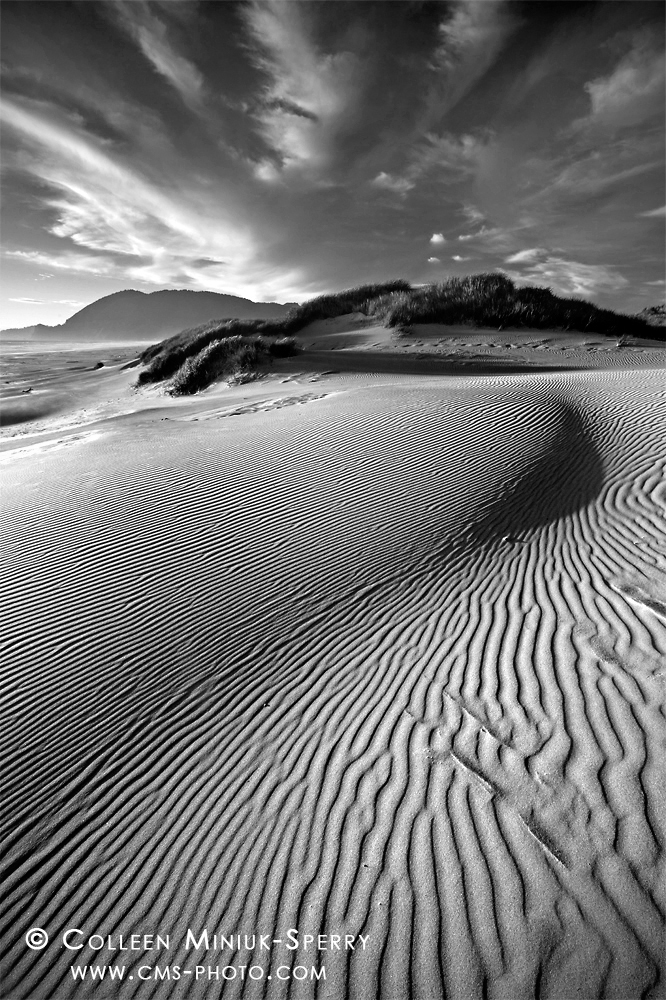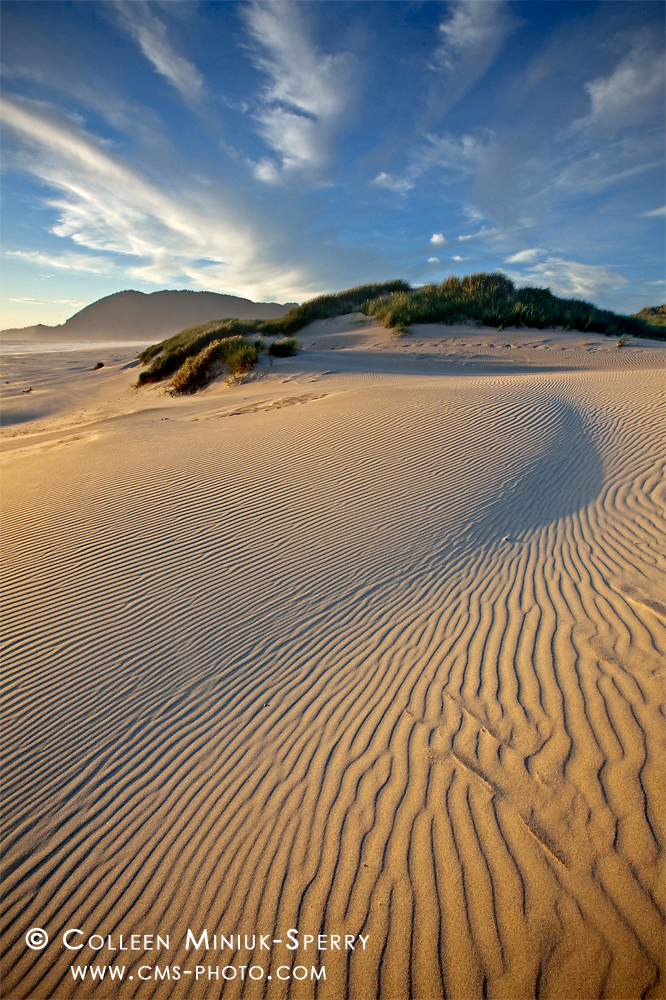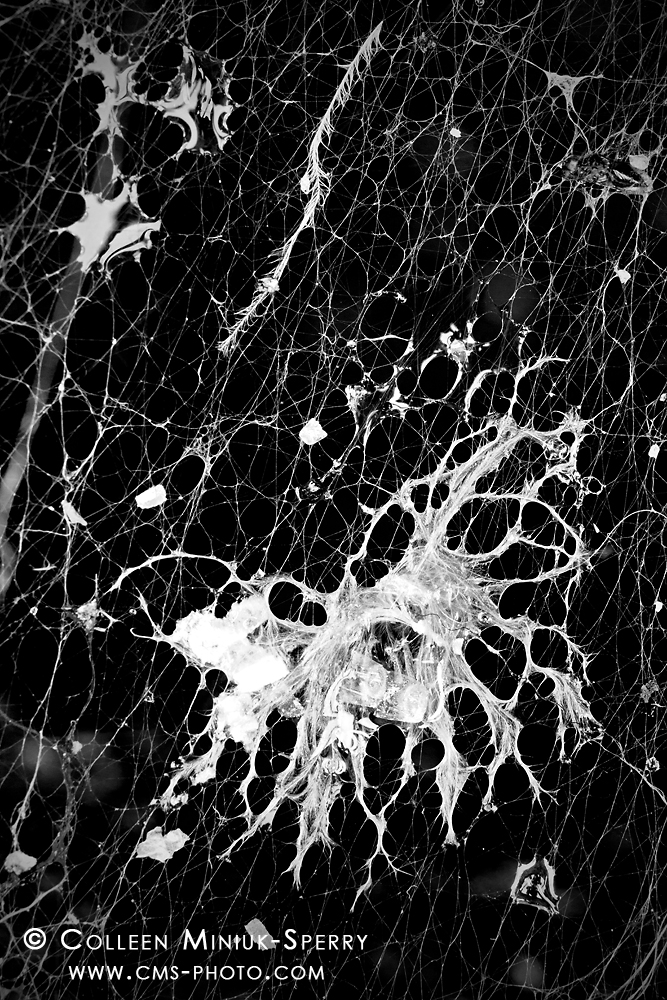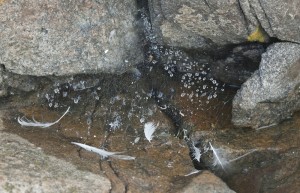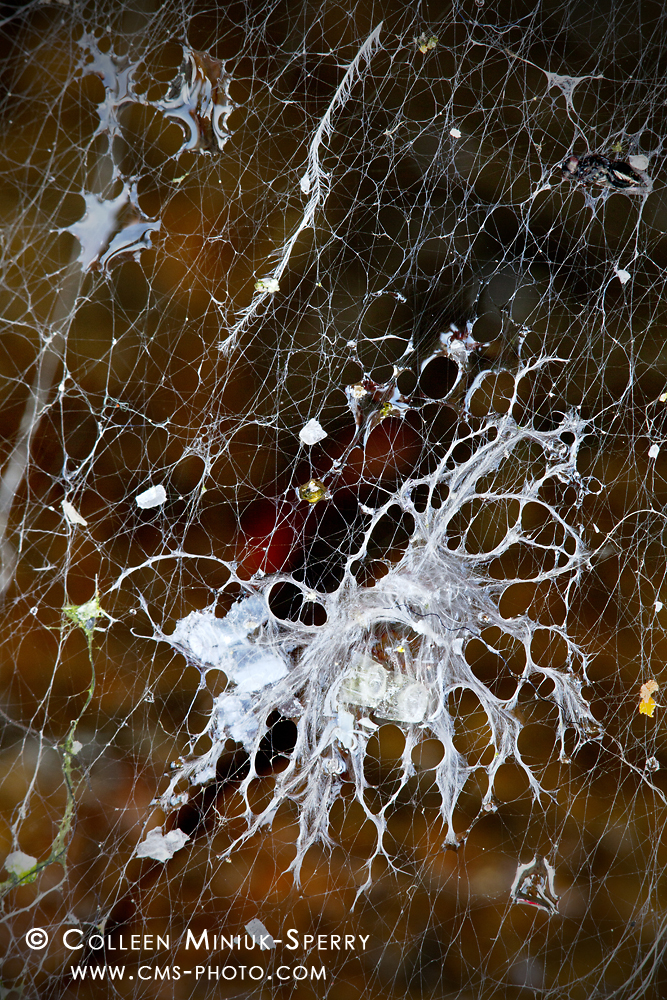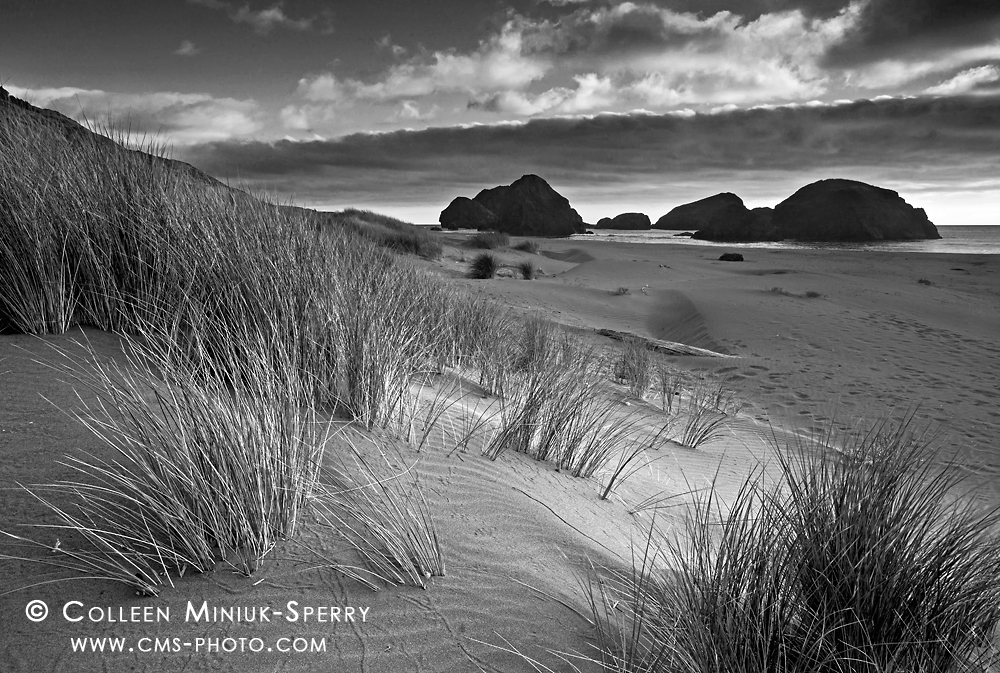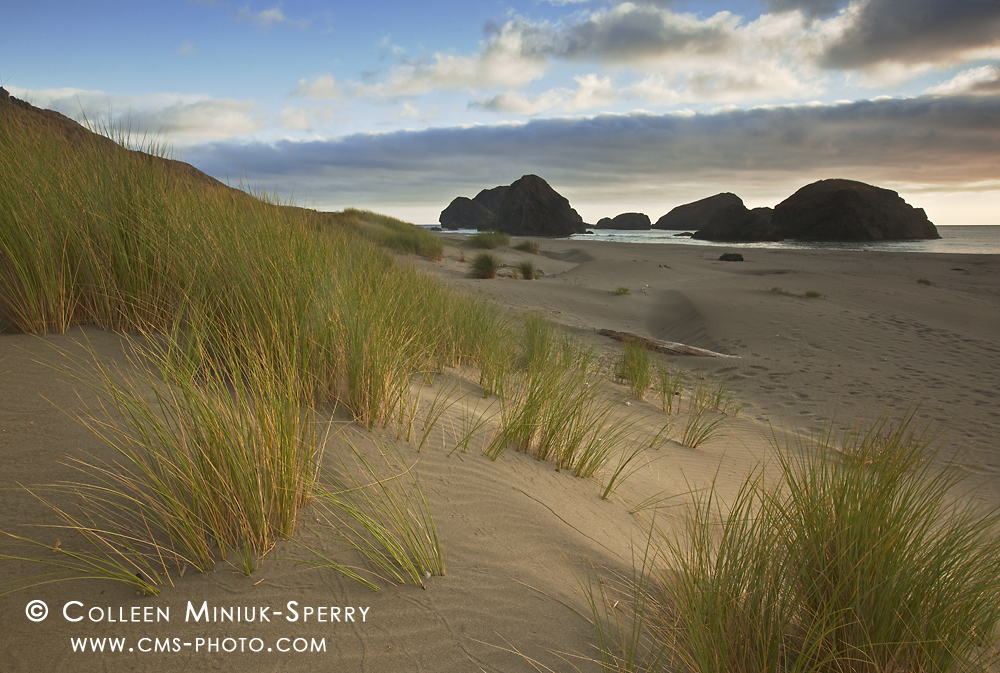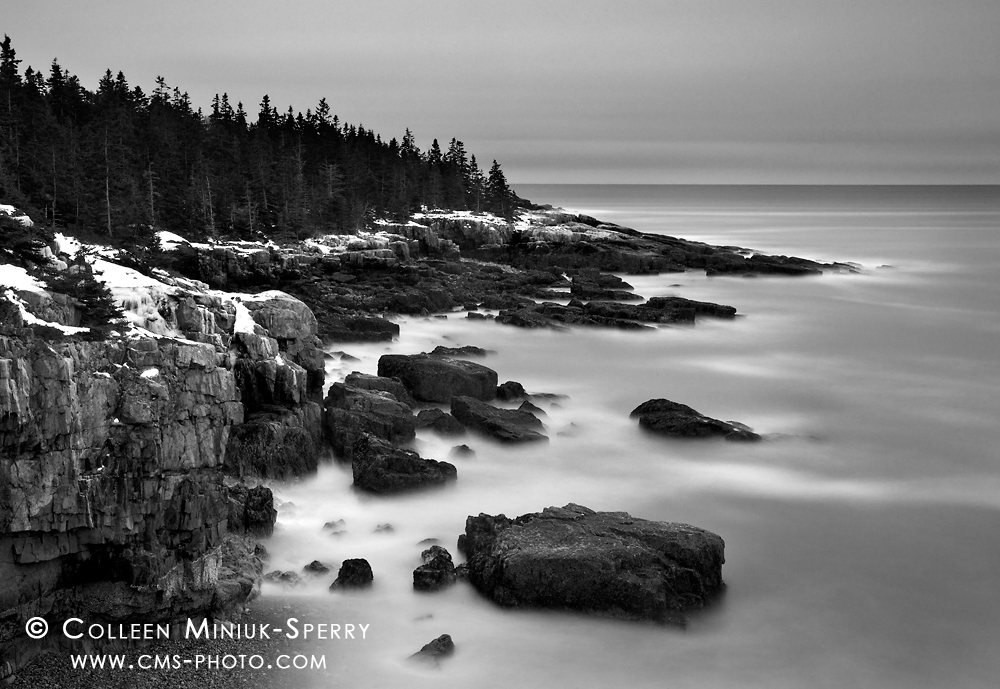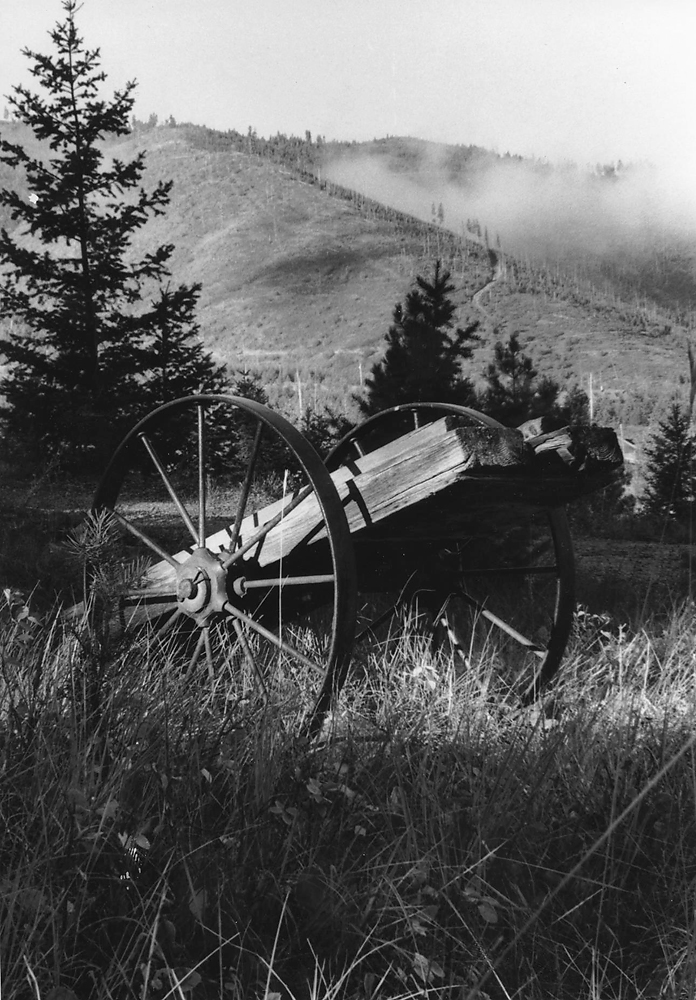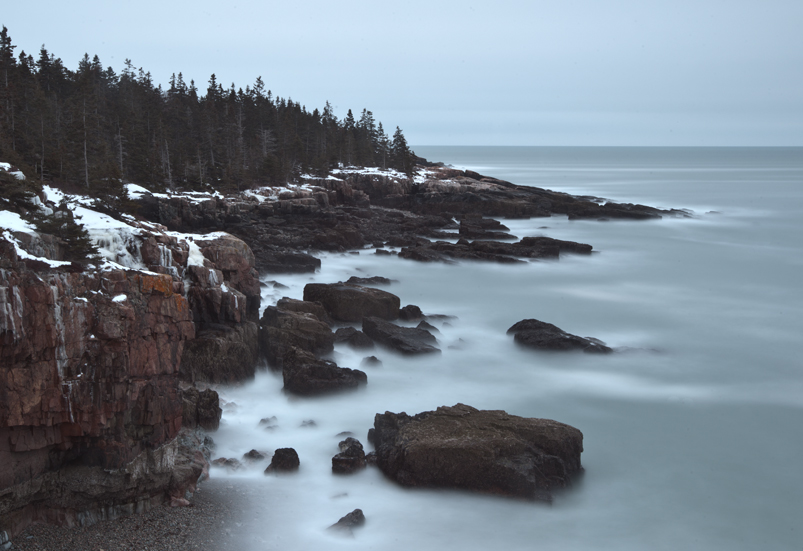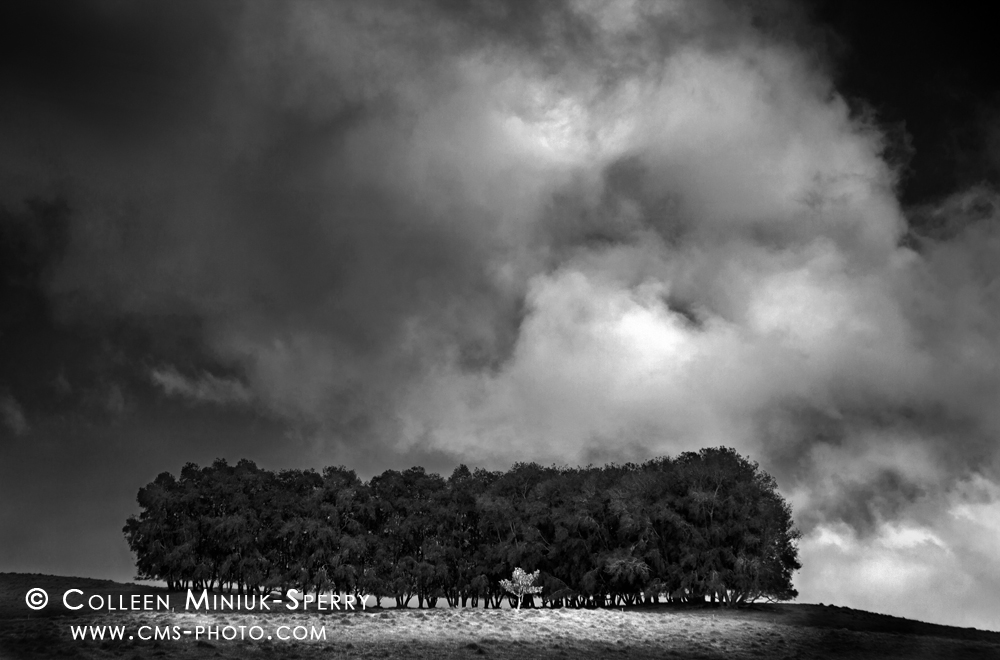
Day 5: “Taking Center Stage.” Row of trees in the pastoral Kohala Mountains region on the Big Island of Hawai’i. (Prints available for purchase – click on photo to order yours!)
Having sat behind a computer for 10 years prior to pursuing photography full-time, I dislike sitting in front of a computer now and post-processing my images for hours at a time. I would much prefer to spend that time playing outside and perfecting the image in the field rather than “photoshopping” it later. My post-processing time is generally limited to cleaning up the dust spots, making a few Curves adjustments, sharpening, and more recently, tapping into Tony Kuyper’s awesome luminosity masks.
Not so for my Day 5 Black and White Challenge entry! I ain’t gonna lie, I worked the heck out of this image in Photoshop! And boy, did it need it!
I made the original color version a number of years ago while driving the backroads through the Kohala Mountains on the Big Island of Hawai’i. At the higher elevations, beams of mid-day light poked out from behind the fast-moving clouds, spotlighting various elements of the pastoral landscape. We had pulled over to explore this scene, one that had grabbed my attention immediately as we approached it at 45 mph. I liked the way the small tree stood at the foot of a stand of larger trees. Using my telephoto lens, I tried a number of different compositions to convey this relationship. In reviewing my frames, though, they all felt too tight to express what I was truly seeing.
I switched to my 24-105mm lens to back off and include more of the moody sky. I enjoyed how this broader perspective offered a fresh view of scale between the small tree, the stand of trees, and the ever-changing sky. After a few frames, a soft light illuminated the area surrounding the small tree. As the light danced, I kept shooting various compositions. Pleased with my results, we jumped in the car and continued our leisurely drive in the beautiful countryside. (Post continues after the photo.)
While browsing my images back in Arizona, the image did not stand out among the thousands of frames I created during our week-long trip. Simply put, I didn’t find it remarkable. So, the image has been collecting dust on my hard drive ever since. Well, that is, until the Black and White Challenge crossed my desk recently.
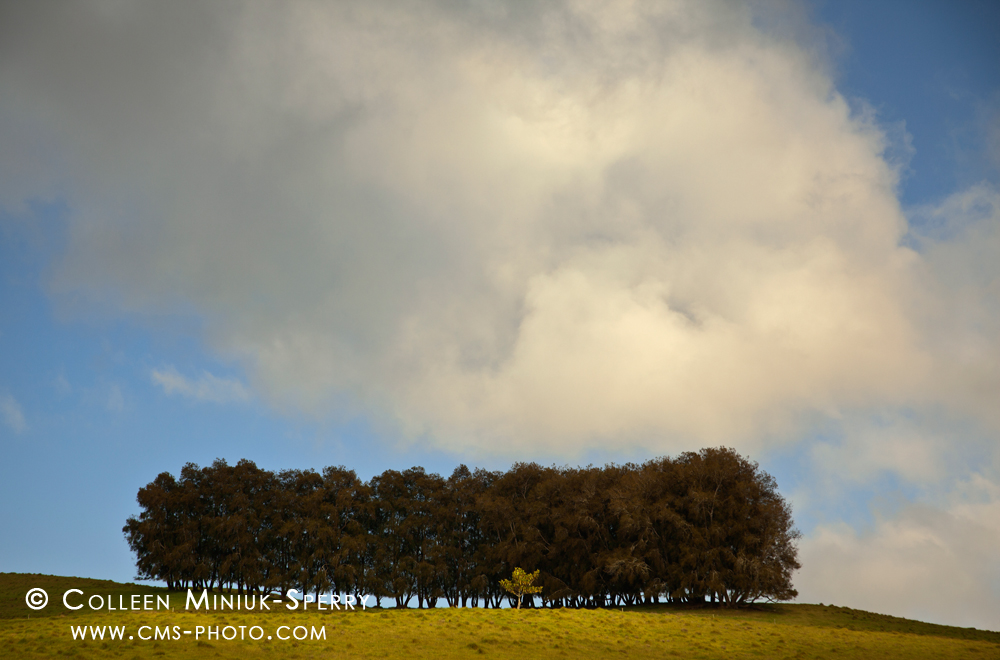
The original color version of “Taking Center Stage”
As I prepared other images for this challenge, I reconnected with the notion of using traditional black and white processing (specifically, burning and dodging). With this in mind, I pulled this image out, dusted it off, and just started playing with Curves adjustments and masks. A little darker in the sky to frame the primary subject and to make the clouds stand out. A little lighter in the foreground to grab attention. A little darker around the beam of light so as to define it better than in the color frame. A little darker around the edges of the frame to hold the viewer’s eye inside the picture longer. A little darker in the trees. A little lighter on the small tree in front. With each adjustment, what I liked about the original scene started to emerge in the photograph on the screen!
Just for fun, I tried making similar adjustments to the color image, but without much success. No matter the change, the color only served to distract. The tones of the small tree blended with the tones in the foreground. The blue sky felt too calm and cold for how I interpreted the scene (which was like the small tree was trying to take the center stage). In short, my vision simply needed to be expressed in black and white.
What do you think? Do you prefer the color or monochromatic version? Why? I’d enjoy hearing your thoughts in the Comments section below.
What I loved most about this exercise is that it pushed me in a different direction than I’ve been heading for almost 11 years. The challenge reconnected me with my photography roots, which allowed me to see my photography in a new light (pun intended). I am grateful to Floris van Breugel for nominating me and giving me this creative jolt.
So, I’m challenging everyone reading this to the Black and White Challenge. If you have not tried it yet, consider yourself nominated! If you have already done it, why not try it again with five new images?
You do not have to be on Facebook to participate (and don’t use that as an excuse to not participate)! Experiment, play! Pick out several images you think a black and white treatment would improve the image. If needed, learn how to do selective adjustments in post-processing (e.g. Levels and Curves with masks) so that you get the feel of how selectively burning and dodging enlargements from film helped deliver a final vision in the traditional darkroom. Evaluate your results. What do you like about what you see? What don’t you like? Change what you don’t like, keep what you do.
Not every photograph will be a successful one in black and white, but just by trying, you’ll be learning new things about your photography, about your craft, and most importantly, about yourself as a photographer.
Keep shooting!
~Colleen

